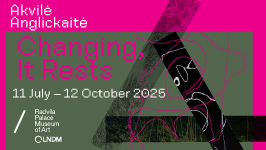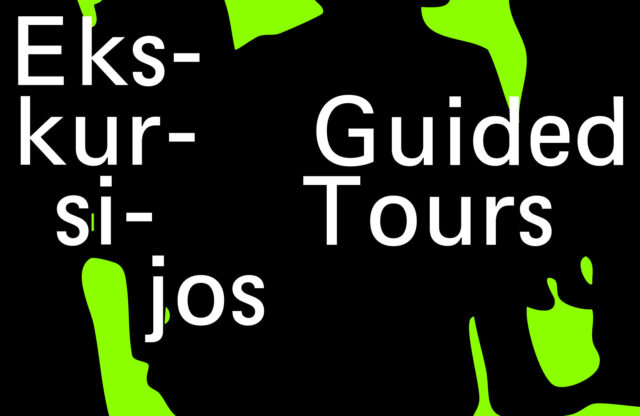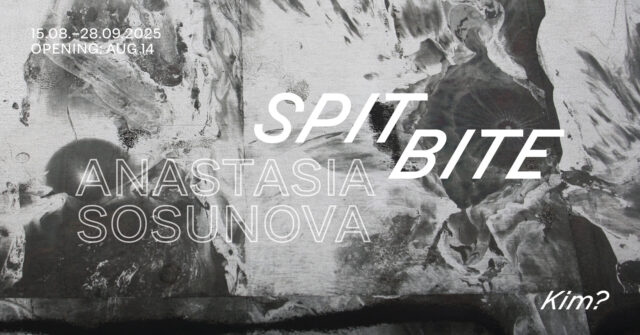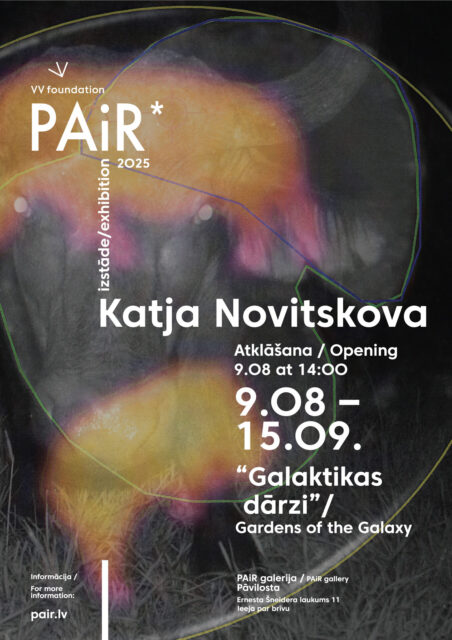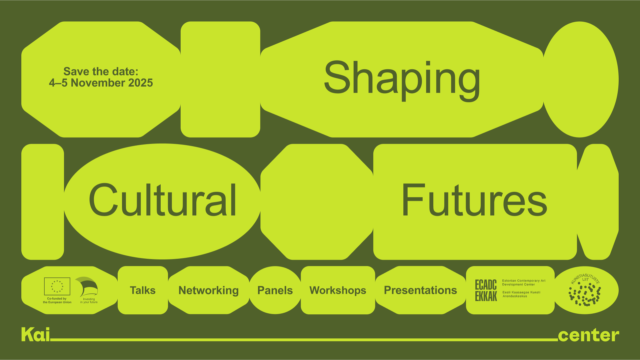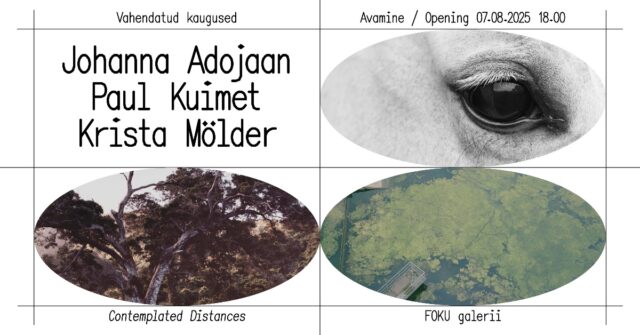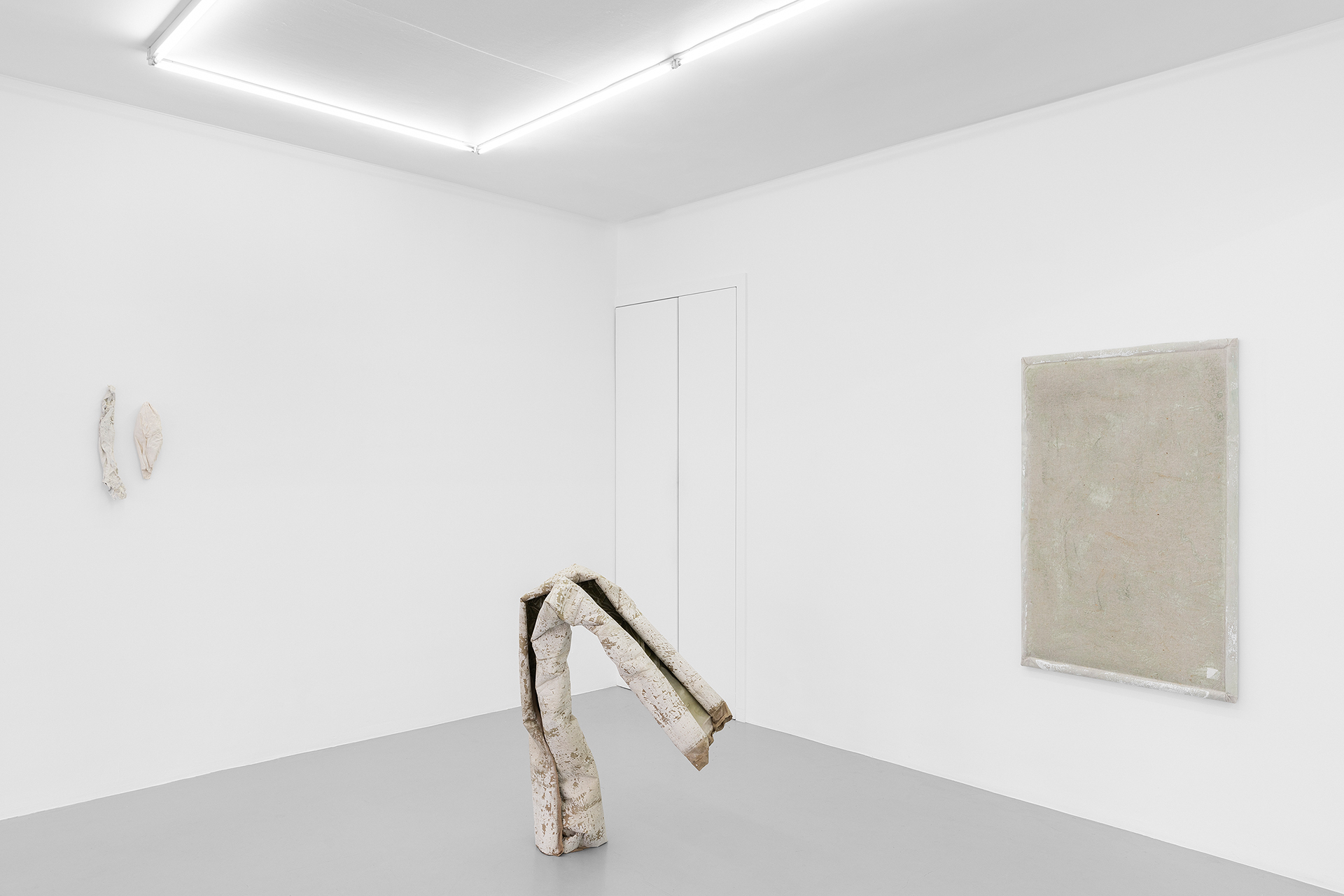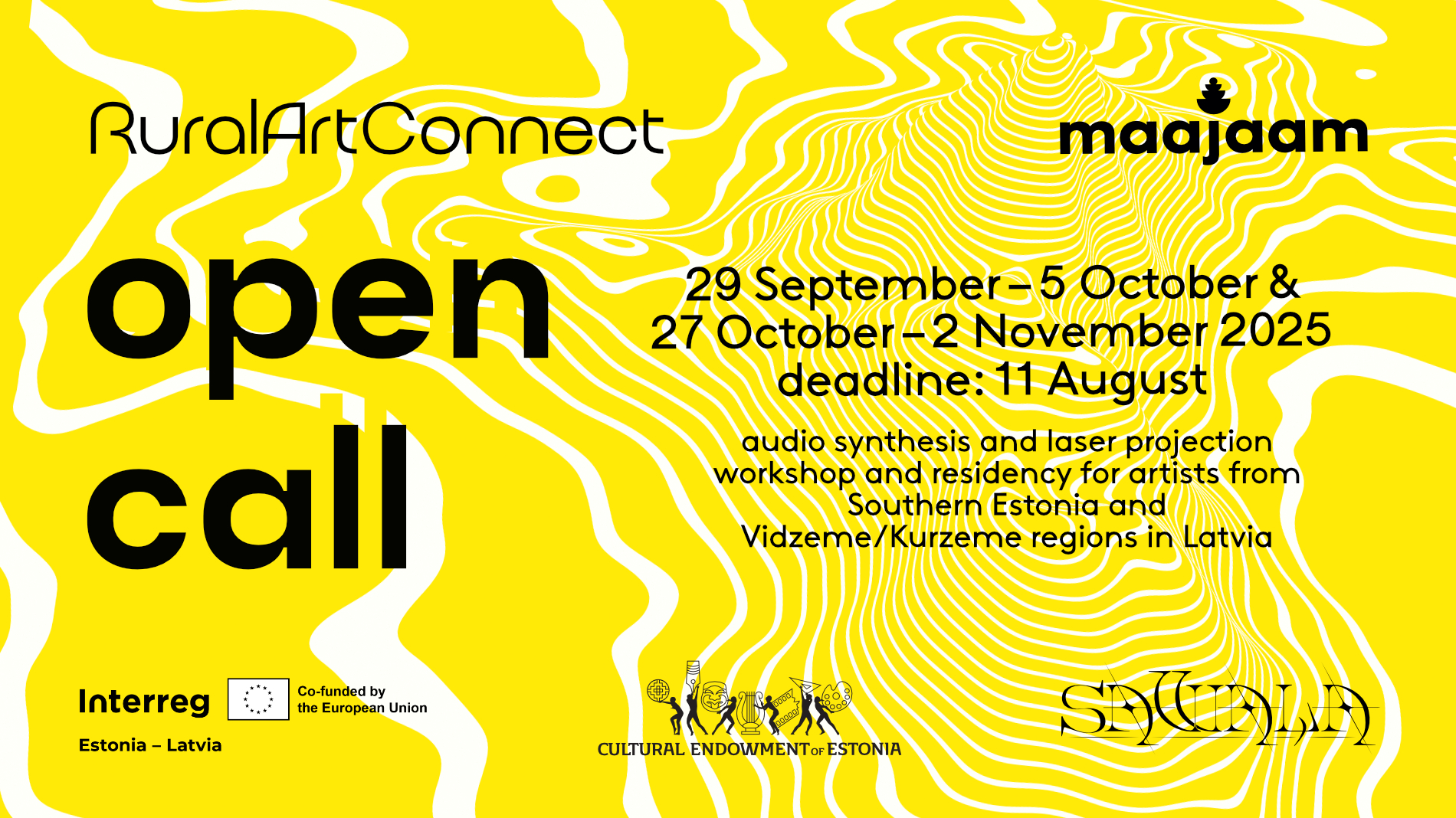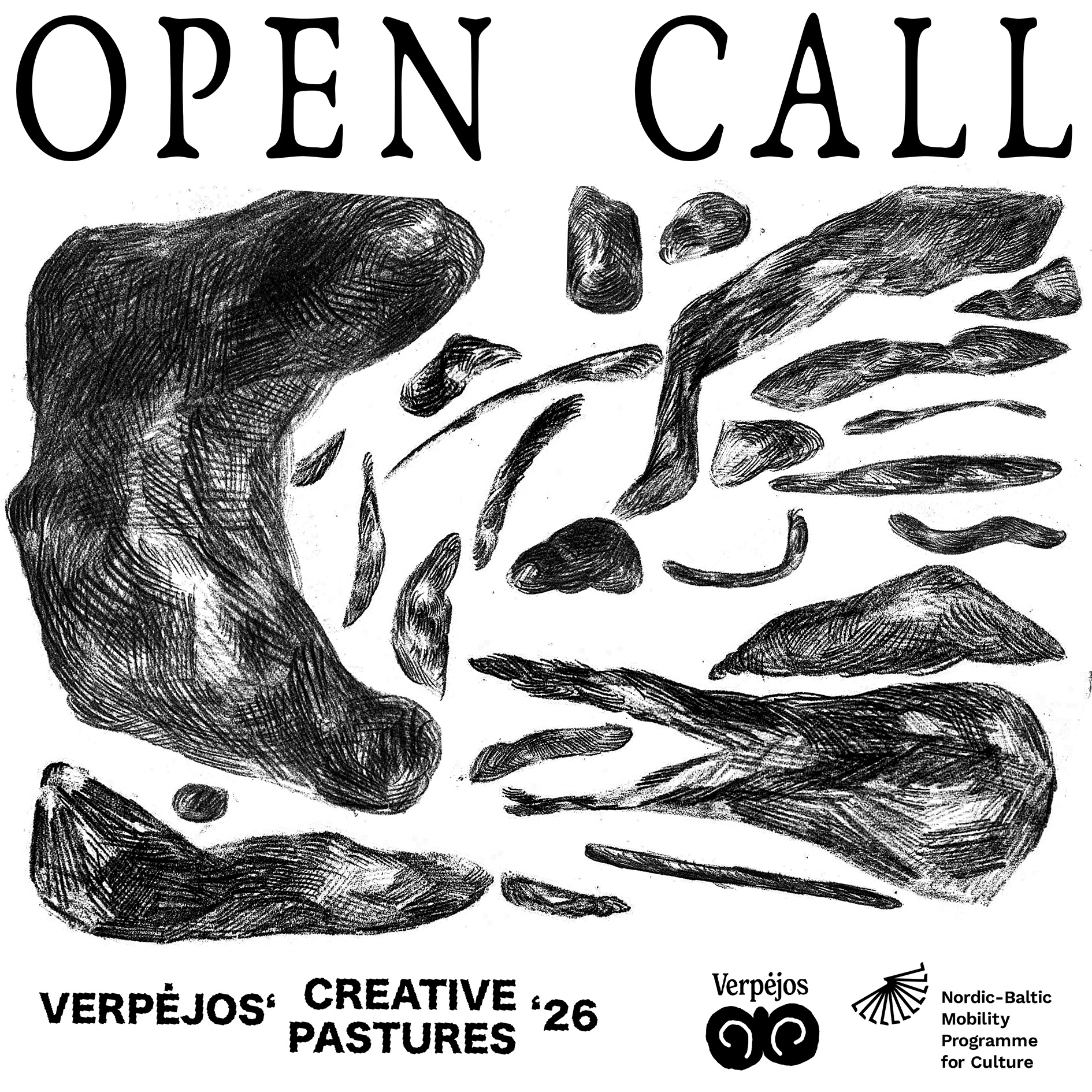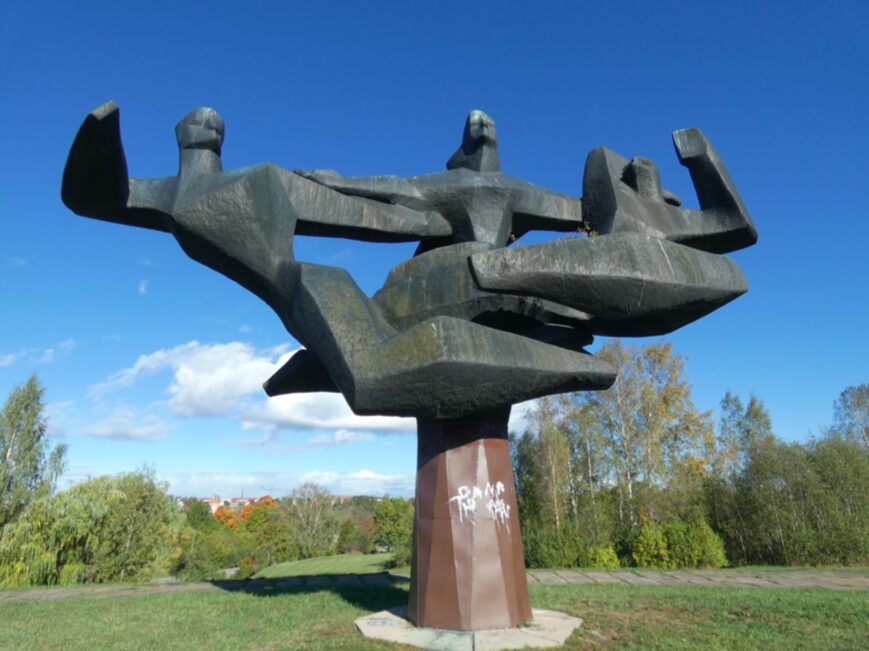A drag performer, painted blue and holding a trident, scans the little fishes brought in by the cultural current through the doorways. I don’t think I’ve ever seen so many people at a performance art event.
I hear voices filled with excitement for the possibility of indulging in absence.
As Lithuanians, we have so much absence…
Indulging in the event, rather than the art; what happens when the art becomes secondary to the event? After all, this looks like the hot ticket in town.
I guess…
The bass that pulsates gently shakes the ground like the hand of a slightly unsure body. Outside the comfort zone, the mask slips and the piercing howls of overextended synths stretch between the ground and the skies, but the skies have become the seas and we are suspended.
Some half-naked person is doing something by the coat check…
After hanging my coat, I grab the event leaflet that informs me the flood that has overtaken the National Opera and Ballet Theatre fractured the space into three depths. This stone foyer is the shallowest and populated by a school of queer performers. They are dispersed across the foyers, stationary and wandering. At times, blending.
…



What does queerness have to do with it though?
Going underwater and becoming inhuman, so when we talk about ‘inhuman’, we think about queer, drag practice as a method of expression
I hope I’m not too presumptions in saying the audience here is quite straight (a bit too much for my liking…)
Of course
Did you feel friction with them?
No, they were very welcoming
(Water does lubricate…)
We were given freedom. We guided the audience into the flows of the space to experience the building as a performance; we were the extension to that.
I must say, it still feels slightly shallow in this layer.
In the space shared with the audience, performers have stronger gravity, attracting others’ attention into their orbit. Yet most of them ignored you, caught in the gravity of their own lives. Who is to blame for this funky gravity?
Answers, we’re looking for answers that won’t be found, so shall we go?
Einame, einame
Rustle, move, rub shoulders, glasses chatter and voices clink, pouring themselves into the mouth of the other.
Oh, we are so excited
I listen deeper, but somehow, this bass eats everything as it permeates excitement into our pores. Is everyone here permeated? Are they excited in the same way I’m excited?
What is the sum of these bodies, how do they add up to a performance, or rather which parts should add up to a performance?
It’s cool, I like it already. Let’s see the other lights.
I swim to the second depth of the Red Foyer—the twilight zone. Weaving through the crowd, I try to catch the vibrations deflated by density when hushed anticipation falls over our eyes and dims the light. The crowd points their attention to the hooded figures in black, looming over us from the staircases and entrancing us into their cave.
This part is supposed to go on for 40 minutes
Cued by the waving arms of the conductor, the voices of these hooded figures cascade, like the movement of the cards after you win a game of Solitaire on an old Windows computer. These voices are equally mesmerising and with time, create a similar sense of being swallowed up by a near-infinite cacophony. Reaching for waves, the voices overlap towards a non-human one-ness—nature imitating nature, a chameleon against a tree.
Nice, but will we go inside for the performance? / So that is to say it hasn’t yet begun?



It feels as if no one here has read a fairy tale in their life. We should be resisting the apple, telling the witch a firm ‘no’ when she offers us a peek into her oven. It’s all so foreboding, but I did read somewhere recently that curiosity overpowers fear, so I guess that explains why so many cats are getting killed these days. If this was a sci-fi film (which it might very well be), we’re at that part where the spirit of discovery spills its adrenaline into our bowl and displaces the caution.
Taip, ne visai
I associate performance with intimacy. / Or alienation, it creates a reversal of intimacy, if you have a big space. / You need to have an audience that’s aware of that.
By escaping, what are we are trying to embrace? By descending into the depths, what do we hope to reach and what do we wish to leave behind? We stand, oblivious to these questions, disquiet in our bodies from the stillness, still looking up with necks growing tense.
In the unfolding silence, a few hands scoop up their spilt caution and attempt a clap. Other hands support in kind.
I had a teacher who said, if it’s a performance, nobody claps.
Entering the auditorium, we have descended into the final layer: the aphotic zone, where no light can penetrate. Somewhat misleading given that a film begins playing (the strength of these modern projectors is impressive).
Once illuminated, the screen that covers the entire height of the stage reveals itself to be formed of metallic scales. In our comfortable seats, we have been lured to face some unfathomably large aquatic monster (I knew it was a mistake to ignore fairy-tale logic).
The soundscape reaffirms this, as ambient layers float like jellyfish around us. We must be an obedient audience, for fear of getting stung. If this was a sci-fi film (which it might very well be), we’re about to discover something better left alone.


 A mermaid shuffles onto the stage in front of the curtain and begins vocalising. I try to make out the shape of the words, but the viscosity saturates them beyond resemblance. Are these words meant to be heard, or is everything just a vibe?
A mermaid shuffles onto the stage in front of the curtain and begins vocalising. I try to make out the shape of the words, but the viscosity saturates them beyond resemblance. Are these words meant to be heard, or is everything just a vibe?
She’s playing a lot with atmosphere.
Who is this mermaid? / Why is she so small?
She was a mermaid in her other films.
I just came to see the performance.
Especially in the case of Emilija, it’s very different if you just come and see the performance or if you know what’s behind…
I just came to see the performance.
I feel the scales reaffirm the shell. It’s too perfect. Almost afraid of the mess. What if the scales hung off bleeding flesh?
What does she do exactly? I thought she makes 3D animation… Was I wrong the whole time?
This is real. The movies are real footage.
Her website does state she’s an artist and a filmmaker. Why is she doing a performance? Questions continue bubbling up: How is it more than a film? How would this be different if we weren’t here?
This once-flooded building has turned the tide, and it is now the architecture that is drowning the piece.
I think it was super ambitious.
The images of the film hang heavy on my eyelids. One image in particular lingers: the metallic claw of some kind of device pulling and probing the underwater flora. Suddenly, the sound of the speakers popping stirs these quiet waters—we’re awakened from our hypnosis to witness the performance of the unexpected.
At the climax of the piece, this unfathomable, aquatic monster turns its laser eyes to us, scanning our bodies in sweeping strokes. The moving lasers cast a net and we’re caught in inescapable eye contact (an even worse fate than a watery grave for some, I’m sure). Some catch the light with their contours, others hide for fear of retinal damage.
I wonder whether that lingering image foreshadowed our transformation into test subjects. Is it us that is now being probed, like the underwater flora? I also wonder whether I’m giving this piece too much credit.
Our captivity is finally broken by the mermaid shuffling down the aisle and telling us
It’s over
over a malfunctioning microphone.
If a tree falls into the water, did the performance happen?
***
Dovydas Laurinaitis’ response to Emilija Škarnulytė’s performance Aphotia at the Lithuanian National Opera and Ballet Theatre on 23 January 2023.
Photography: Andrej Vasilenko, Gintarė Grigėnaitė











